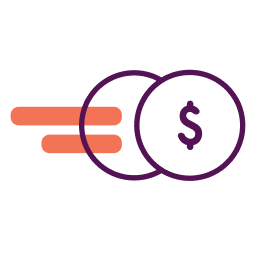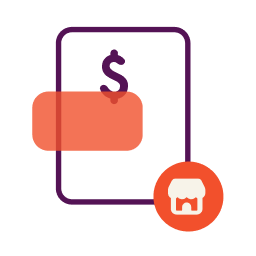As a small business owner, finding the right financing is crucial. But not every form of business financing is inexpensive. In fact, some can charge interest rates in the triple digits.
The average business loan interest rate in 2020 can vary by loan type, so it’s important to know what options are available and how much they’ll cost you. Here’s what you need to know about what interest rates to expect, how interest rates are determined, and how a loan’s annual percentage rate affects your business.
Business loan interest rates in 2020 by loan type
As you search for a business loan for your company, you’ll likely come across several different types of lenders and loans.
Loans that come from traditional lenders or are insured by the U.S. Small Business Administration (SBA) typically charge the lowest interest rates, but they also tend to have stricter criteria for approval. On the flip side, online business loans and other types of loans charge more in interest but are easier to get.
Here are some interest rates you may come across as you compare various business loan options.
Business Loan Interest Rates
| Loan type | Interest rate |
|---|---|
| Traditional bank loans | 2% to 13% |
| SBA loans | 7.75% to 10.25% |
| Short-term loans | 8% to 99% |
| Intermediate-term loans | 6% to 30% |
| Business lines of credit | 8% to 80% |
| Equipment financing | 4% to 12.75% |
| Invoice financing | 13% to 60% |
| Merchant cash advance | 20% to 250% |
If you’re not familiar with some of these loan types, here’s how each of them works and can help your business.
Traditional bank loans
Typically long-term loans of up to 10 years or even longer, bank loans provide low interest rates but require a solid personal and business credit history and a strong track record from your business. They’re typically best for long-term expansion planning.
SBA loans
Insured by the SBA, these loans are often originated by a financial institution and have strict eligibility requirements. That said, they carry relatively low interest rates and long repayment terms, making them a great alternative to traditional bank or credit union loans if you qualify. SBA loans typically carry a longer term, and may be a solid option if you’re looking for long-term financing.
Short-term loans
If you’re having cash flow problems or need to cover working capital, short-term business loans may be able to help better than credit cards. These loans are typically due within a few months to a year and charge high interest rates. That said, they typically don’t have a high credit standard.
Intermediate-term loans
If you need some money to expand your business but not a lot, intermediate loans can be a simpler way to get funds without a long repayment term. You’ll typically have between a year and five years to repay what you owe.
And while some intermediate-term loans can be more expensive — especially if you get one through online lenders — they may be easier to get than a long-term bank loan.
Business lines of credit
A line of credit allows you to take cash withdrawals when you need them rather than getting a big lump sum at the beginning. They’re an excellent choice if you prefer having access to financing when you need it and don’t necessarily have a specific plan for how you’ll use it.
Lines of credit can be relatively expensive in some cases, but they can offer low interest rates from the right lenders and with the right credit situation.
Equipment financing
As the name suggests, equipment financing is designed to help you purchase a physical asset. You’ll typically need to put money down on the loan, and the lender reserves the right to repossess the equipment if you default.
Equipment loans typically offer inexpensive financing because they’re secured by a physical asset the lender can sell to satisfy what you owe. To qualify, though, you may need a solid credit history, time in business and revenues.
Invoice financing
If you need cash now and won’t receive payment from your accounts receivables soon enough, invoice financing can help. A lender will offer to provide financing up to a certain percentage of an outstanding invoice, typically requiring that the payment come due when the invoice is paid in full.
This form of financing is significantly cheaper than other short-term financing because it’s secured by the invoice. However, some lenders can still charge high interest rates, especially if your business is relatively new or your credit history is less than stellar.
Merchant cash advance
This type of loan is an advance on future credit and debit card sales and can be one of the most expensive forms of business financing. Merchant cash advances are easy to get, even if you’re a new business owner and don’t have great credit. But the cost makes it unappealing unless you’re desperate for cash and have no other alternatives.
How loan rates are determined
Businesses and their owners come in all shapes and sizes, so commercial lenders typically don’t offer a single interest rate to everyone who qualifies for a loan.
Instead, they use what’s called risk-based pricing, which determines whether you qualify and what rate you can get based on how much of a risk you present to the lender.
This is why business owners with bad credit or a brand-new business may have a hard time getting inexpensive financing options — because they present a higher risk than business owners with great credit and an established business. Here are some factors that lenders consider when determining your interest rate.
Business credit history
If your business has been around for a while and you’ve used business credit before, you may have a business credit history. Depending on how good the history and credit score are, it could help your chances of getting a low interest rate. If it’s not in great shape, though, or you don’t yet have a business credit history, it could result in a more expensive loan.
Personal credit history
In addition to your business credit history, many lenders will also run a check on your personal credit report. This primarily occurs when the loan requires a personal guarantee, and the lender wants to determine how likely you are to repay the loan if your business can’t.
The higher your personal credit score, the higher your chances of getting a lower interest rate.
Time in business
Only two-thirds of businesses with employees survive the first two years, according to the SBA. So if you’re just starting out, lenders take that survival rate into account by charging higher interest rates or simply declining to extend credit.
Many business lenders require that you’ve been in business for a set period to qualify for a loan, but the longer you’ve been around, the more it shows that you’re successful and likelier to stick around and make your payments.
Revenue
As with time in business, your revenue is a clear indicator of your ability to repay your debts. As with minimum requirements for credit and time in business, you may also see minimum annual revenue requirements. But if your business far exceeds those minimum requirements, it could help you qualify for a lower interest rate.
Business plan
With some lenders, you may be required to present a business plan, showing how your business is run, your future plans, how you plan to use the loan funds, and how you plan to pay them back.
The stronger the case you can present through your business plan, the easier it’ll be to get approved, potentially at a lower rate.
Collateral
With some business loans, you may be required to put up collateral to secure the loan amounts you borrow. This can be the equipment you’re planning to purchase with the loan, real estate or some other asset the lender approves. Because secured loans present a lower risk to lenders than unsecured loans, they typically come with lower interest rates.
Down payment
If you’re getting an equipment loan, a high down payment shows the lender that you have skin in the game and reduces their exposure to risk. It also decreases the amount you have to borrow, which will save you money on interest charges regardless of what interest rate you qualify for.
How APR works
You’ll see a lot of different variable interest rate terms when comparing various business loans. For example, some lenders may choose a monthly pricing model, focus solely on the interest rate, or use what’s called an annual interest rate (AIR).
A loan’s annual percentage rate (APR), however, represents the total cost of taking out the loan as an annual rate. In addition to the interest rate, it also includes fees and other finance charges.
So if a lender advertises a 5% interest rate and a 5% origination fee, the APR will be higher than the marketed rate — and the actual rate is determined by how much you borrow and the repayment term on the loan.
As you compare different business loans, take the time to calculate the APR for each option so that you can get an apples-to-apples comparison. If, however, the lender uses the term APR, you don’t need to use a calculator because they’ve done the math for you.
Typical business loan fees
Because your APR includes interest rate and fees, it’s important to look for lenders that charge fewer fees that don’t inflate your rate. While it’s not always possible to get a loan without any fees at all, here are some you should know about:
- Application fee: Some lenders charge this just for processing your application — including running a credit check — and rendering a decision.
- Origination fee: This fee comes into play when the lender originates and disburses the loan funds. In most cases, the lender will deduct the expense from your loan disbursement instead of requiring you to fork over cash.
- Processing fee: In addition to an application fee, some lenders may charge a processing fee for the time it takes to review your loan application.
- Guarantee fee: If you’re getting an SBA loan, you’ll be required to pay a guarantee fee. Depending on the type of SBA loan you get and the amount, this fee can range from 0.25% to 3.75%.
- Prepayment fee: This fee is a penalty a lender may assess if you pay off your loan before the end of the repayment term.
- Late payment fee: Most lenders charge a fee if you miss a payment. In some cases, you may get a grace period, but there’s no guarantee.
- Check fee: If you choose to make your monthly payments by check instead of via bank transfer, the lender may charge you a fee for the service.
The bottom line
Business loan interest rates in 2020 can vary based on the type of loan you need and the lender you choose. Because there are several factors that can determine your approval odds and interest rate, it’s important to look for ways to improve your chances of qualifying for favorable loan terms, including building your credit score.
Also, watch out for fees that could increase the total cost of borrowing, which is reflected in a loan’s APR. The more small business lenders you compare, the easier it will be to find the one that charges the lowest rate for your situation and, therefore, can provide the best loan for your needs.
This article was originally written on June 24, 2019 and updated on March 23, 2023.



Have at it! We'd love to hear from you and encourage a lively discussion among our users. Please help us keep our site clean and protect yourself. Refrain from posting overtly promotional content, and avoid disclosing personal information such as bank account or phone numbers.
Reviews Disclosure: The responses below are not provided or commissioned by the credit card, financing and service companies that appear on this site. Responses have not been reviewed, approved or otherwise endorsed by the credit card, financing and service companies and it is not their responsibility to ensure all posts and/or questions are answered.